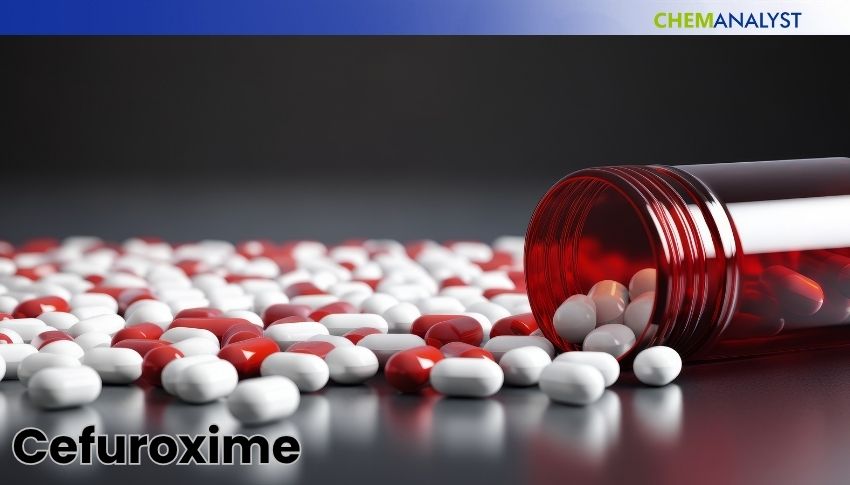Welcome To ChemAnalyst

In June 2025, cefuroxime prices experienced a significant global decline, challenging assumptions about pharmaceutical raw material costs and market stability. This downturn was driven by a worldwide oversupply, particularly from China and India, coupled with muted demand across key markets like the U.S. and Germany. In China, deflationary pressures and overcapacity led to aggressive discounting, while in the U.S., excess inventory from anticipating higher demand, coupled with buyer caution amid tariff uncertainties, further depressed prices. Germany also saw declines due to healthy inventories and reduced shipping costs. This price reduction, while offering short-term cost relief for drugmakers and downstream industries like cosmetics and biodiesel, highlights the critical need for active supply chain management and adaptability in the volatile antibiotic market.
As global healthcare systems grow more accustomed to shifting economic and supply chain pressures, June 2025 was a singularly acute downward trend in Cefuroxime prices that threatened long-held presumptions about raw material costs and pharmaceutical market stability. Cefuroxime news speaks volumes not only for antibiotic supply chains, but also for as diverse a sector as cosmetics and biodiesel that depend on this essential compound.
Cefuroxime is a highly significant second-generation cephalosporin antibiotic for which there is initial use in the treatment of a wide range of infections in the respiratory, urinary, and skin systems. Its importance can be seen in its role as a first-line drug in hospitals, clinics, and community health centers across the globe. Besides its medical use, Cefuroxime derivatives are also prized in cosmetics for their antibacterial properties, and they have specialty applications in the biodiesel manufacturing industry, which indicates the universal anchorage of the compound in the global value chain.
In contrast to earlier predictions for a spike in prices, June 2025 witnessed Cefuroxime prices falling in important world markets such as China, the USA, and Germany. In China, the price drop was triggered by a deflationary setting, a 3.6% drop in the producer price index, and overcapacity across the industry in manufacturers. The resultant glut led to aggressive discounting as manufacturers pushed to empty warehouses, although short-term plant shutdowns at larger plants gave market share to smaller manufacturers skilled at making profits on smaller margins. The government of China perceived the dangers of price competition getting excessive, but structural issues have maintained Cefuroxime prices on a consistent downtrend during the month of June.
Prices for Cefuroxime in the United States are also down, fueled by a worldwide surplus supply and poor spot demand. Heightened production from Indian and Chinese manufacturers, expecting better demand, failed to locate suitable markets and led to heavy inventory build-ups. US customers heavily concentrated on stockpiles, especially during prolonged tariff uncertainty and muted prescription consumption during off-peak infection periods. US Cefuroxime vendors thus used extreme cuts in prices to dispose of inventory stockpiles, further fueling the global deflationary tide for the fifth generation of cephalosporins' top seller.
Germany was the peak of European patterns, as prices of Cefuroxime were also relaxed by healthy existing inventories and taut pharma demand. Reduced shipping fees between Europe and Asia also took away pricing power among dealers further, as API supplies from Asian manufacturers restricted further dampened price.
The price fall in core markets is not isolated from its effect on downstream markets. For drugmakers, Cefuroxime price cuts continue to provide cost relief for input costs in the near term but threaten dislocation in the future if price wars erode security of supply or product quality. Generic companies and hospital purchasing groups also have the new challenge of levering cost savings while planning more long-term procurement strategies to protect against expected volatility later this year. In personal healthcare, lower Cefuroxime prices can drive margins for specialty antimicrobial products. Manufacturers of biodiesel also gain from lower-cost industrial-grade derivatives, which can drive competitiveness with unstable fuel prices.
Cefuroxime's volatile price environment in June 2025 is an unavoidable clarion call to action for active supply chain management, proving the value in being commercially aware and responsive in an increasingly changing antibiotic market.
We use cookies to deliver the best possible experience on our website. To learn more, visit our Privacy Policy. By continuing to use this site or by closing this box, you consent to our use of cookies. More info.
